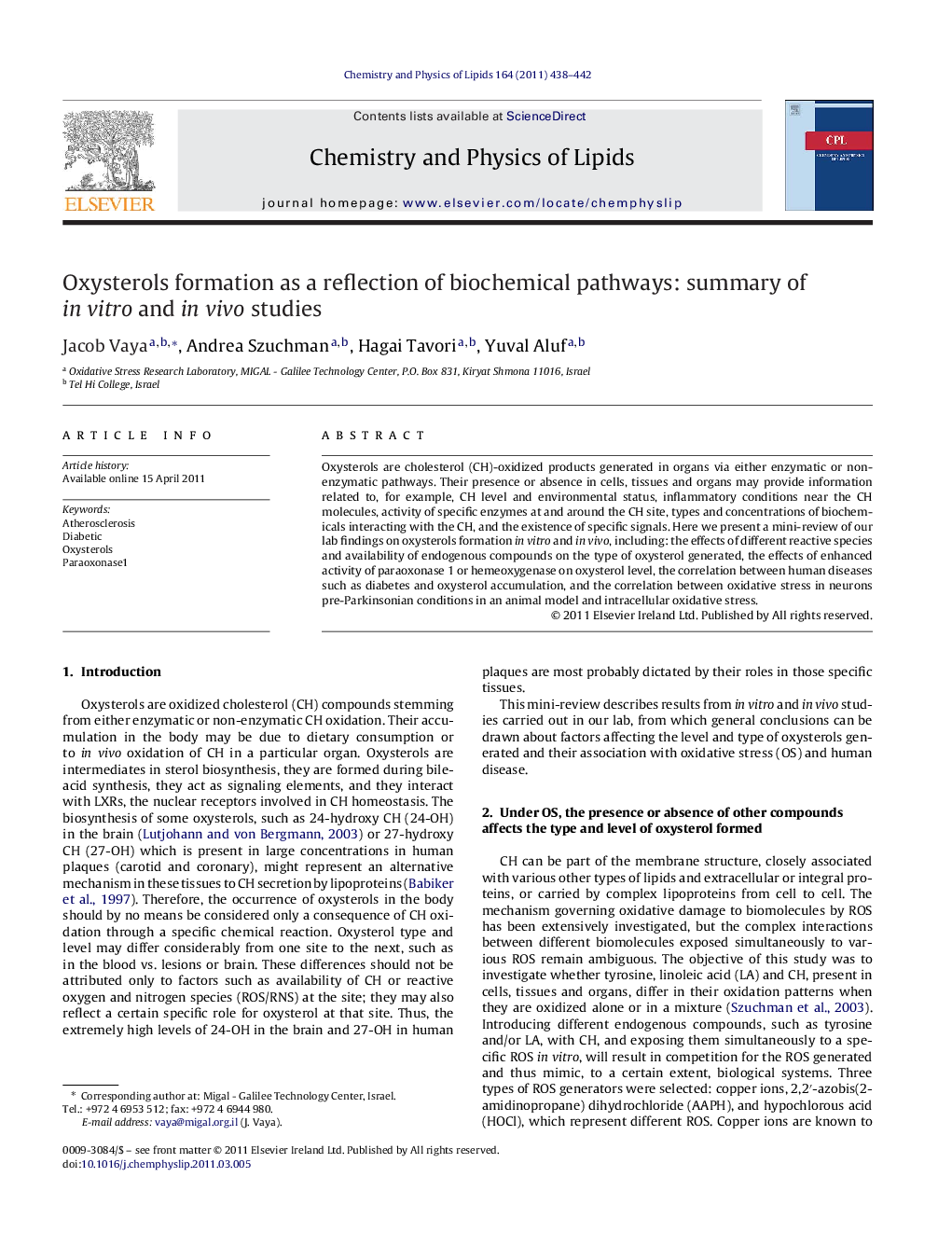| Article ID | Journal | Published Year | Pages | File Type |
|---|---|---|---|---|
| 1253364 | Chemistry and Physics of Lipids | 2011 | 5 Pages |
Oxysterols are cholesterol (CH)-oxidized products generated in organs via either enzymatic or non-enzymatic pathways. Their presence or absence in cells, tissues and organs may provide information related to, for example, CH level and environmental status, inflammatory conditions near the CH molecules, activity of specific enzymes at and around the CH site, types and concentrations of biochemicals interacting with the CH, and the existence of specific signals. Here we present a mini-review of our lab findings on oxysterols formation in vitro and in vivo, including: the effects of different reactive species and availability of endogenous compounds on the type of oxysterol generated, the effects of enhanced activity of paraoxonase 1 or hemeoxygenase on oxysterol level, the correlation between human diseases such as diabetes and oxysterol accumulation, and the correlation between oxidative stress in neurons pre-Parkinsonian conditions in an animal model and intracellular oxidative stress.
► Oxysterols can be used as markers of OS in cells, tissues and organs. ► Their formation is affected by various parameters: the presence/level of ROS/RNS oxidizing the cholesterol. ► The nature of other components in a mixture with the cholesterol. ► The presence and degree of activity of certain enzymes and their site of action.
